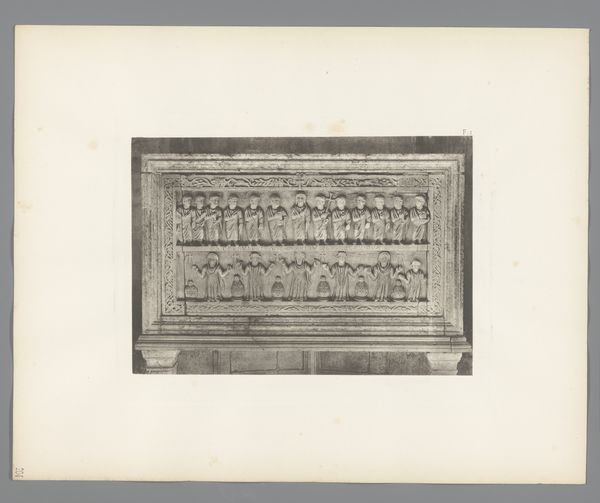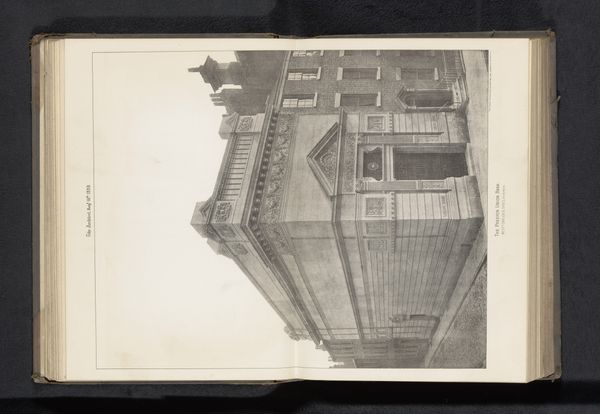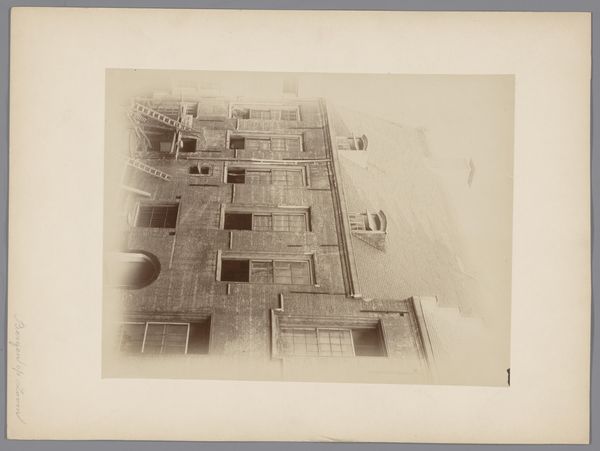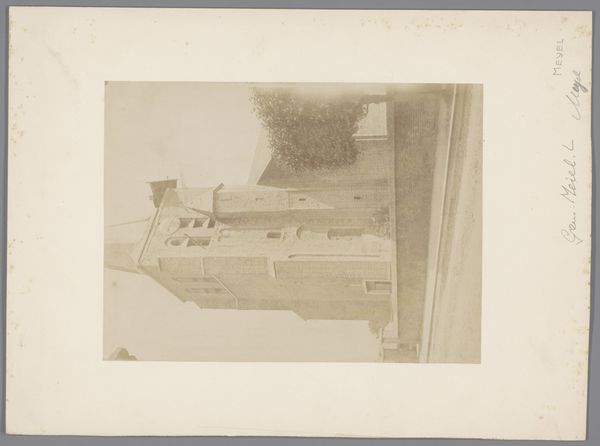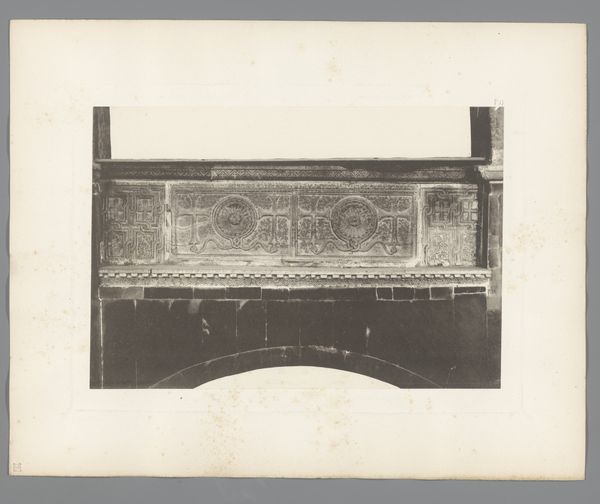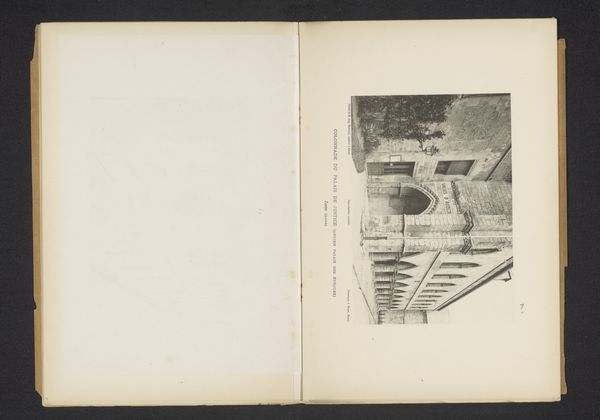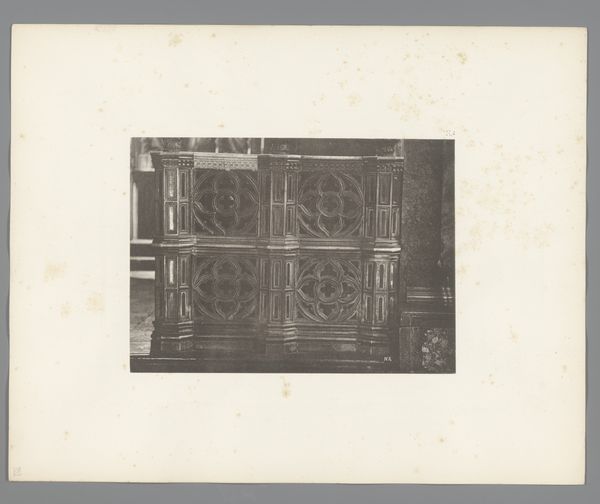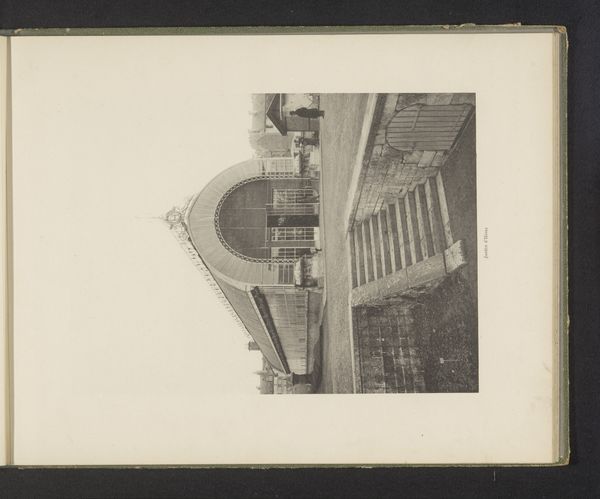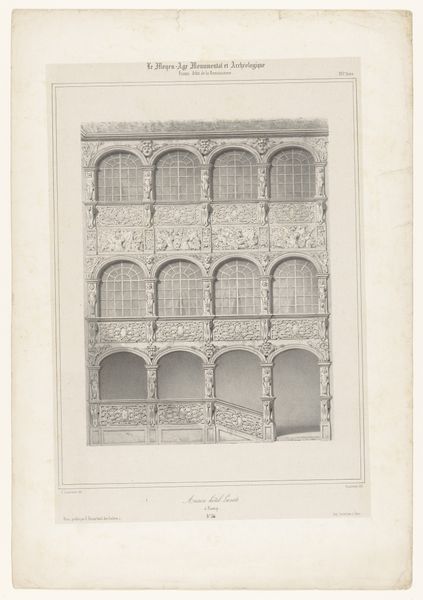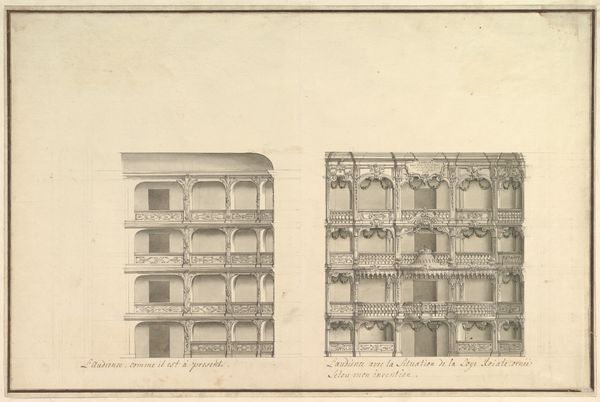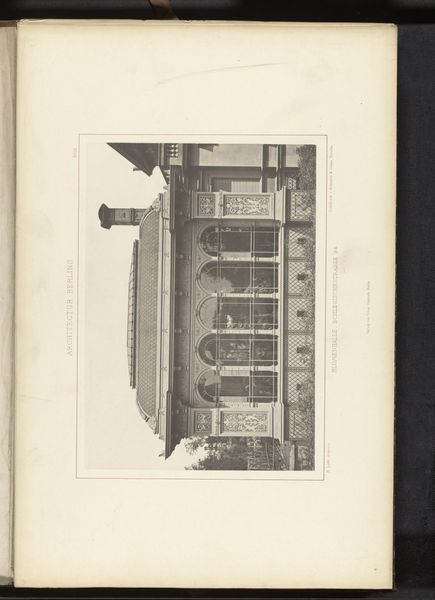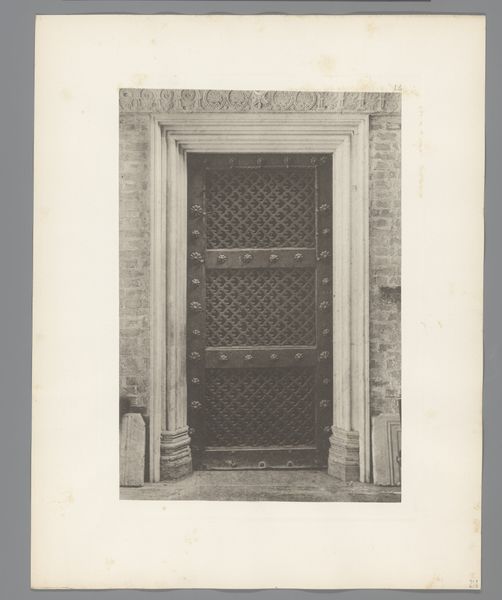
print, photography, engraving
#
white colour balance
#
aged paper
#
homemade paper
#
pale palette
#
muted colour palette
#
pale colours
# print
#
light coloured
#
white palette
#
photography
#
geometric
#
folded paper
#
abstraction
#
pale shade
#
engraving
Dimensions: height 394 mm, width 311 mm
Copyright: Rijks Museum: Open Domain
Curator: Welcome. Here we have an engraving, a detail from San Marco in Venice, created by Carl Heinrich Jacobi before 1885. Editor: Immediately, the muted palette and stark geometric pattern strike me. It has a very austere quality. It feels like a fragment, a repeated motif extracted from a much larger architectural whole. Curator: Jacobi was fascinated with patterns like this one because they tap into something primordial. The square itself, iterated in rows, suggests containment, order, civilization. And yet, there's also a subtle claustrophobia hinted at in that repetition, don't you think? Editor: I see what you mean. The light is also intriguing. The artist employs the shadows to articulate volume. And note how he balances uniformity and the imperfect craftsmanship visible in its texture and slight asymmetry of line and square. Curator: Absolutely. And the use of that specific motif is rich with Venetian symbolism. It echoes not only architectural structure but also hints at mosaic work so prevelant throughout Venice, tying the piece into the layered religious and cultural narratives that shaped that city. Editor: I’d add, too, the absence of color further focuses our attention on form and line. We are forced to study how shape casts light and delineates a surface. Curator: And how that specific structure served as the background to important rituals, shaped identities, built history. These choices invite consideration of cultural and societal narratives embedded within Venice’s architectural framework, revealing much more than mere physical detail. Editor: Looking again, I appreciate the careful detail employed in rendering this isolated pattern, especially in a period so entrenched in romanticized visions of landscape. It pushes the boundaries of formal representation and abstraction. Curator: And for me, that speaks to how objects hold cultural memories, and continue to evoke collective emotional connections, despite temporal and geographical shifts. The engraving invites viewers to confront how deeply we are connected to shared heritages and histories, whether personal or cultural. Editor: An intriguing insight that frames how our viewing experience shapes a personal understanding of a location we may or may not ever have experienced. Curator: Indeed. Thanks to the visual form of this engraving we grasp deeper connections than any map may offer.
Comments
No comments
Be the first to comment and join the conversation on the ultimate creative platform.
